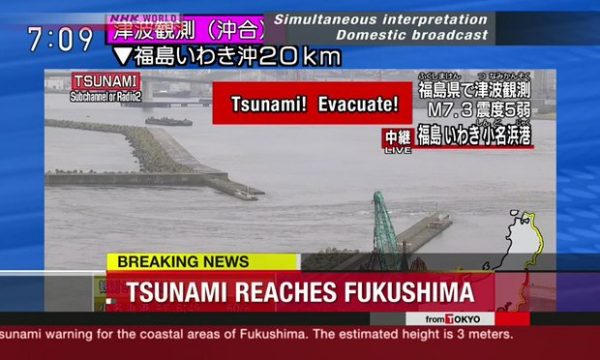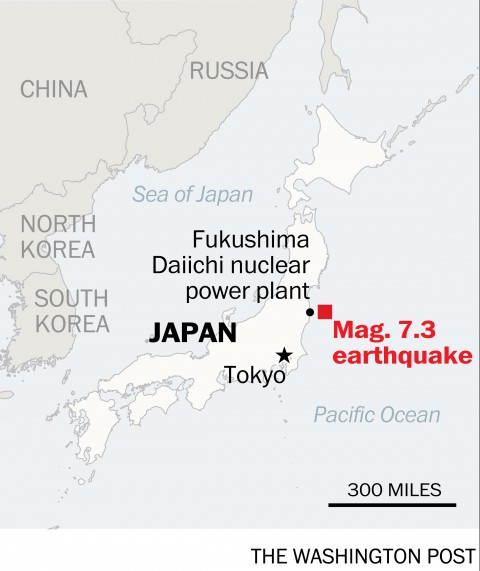 Japan’s Fukushima region was bracing for another tsunami Tuesday morning, after a 7.3-magnitude earthquake rocked the area devastated by an enormous earthquake and tsunami five years ago.
Japan’s Fukushima region was bracing for another tsunami Tuesday morning, after a 7.3-magnitude earthquake rocked the area devastated by an enormous earthquake and tsunami five years ago.
Sirens were blaring along the coastal stretch, warning residents to evacuate to higher ground, as authorities cautioned that a 10-foot-high tsunami could be approaching. Initial waves were less than three feet high, but authorities warned that bigger waves could follow as the sea drew back.
There were no immediate reports of damage or changes in the radiation level at the Fukushima Dai-ichi nuclear plant, which suffered a triple meltdown after the 2011 earthquake and remains in a highly fragile state.
The relatively shallow quake struck at 6 a.m. local time Tuesday and was centered about 15 miles off the coast from Namie, a town close to the nuclear plant. The magnitude was revised several times, but the Japan Meteorological Agency stated at 8 a.m. that it measured a 7.3. It was followed by large aftershocks measuring 5.4 and 4.8.
The United States Geological Survey, however, rated the earthquake at 6.9.
The earthquakes were felt in Tokyo, 160 miles south of the epicenter. Bullet train services were suspended, and a fire broke out at a petrochemical plant, although it was soon extinguished.
 Japanese television showed footage of the relatively calm coastline in the Fukushima and Tohoku regions, with warnings that a tsunami could be coming soon.
Japanese television showed footage of the relatively calm coastline in the Fukushima and Tohoku regions, with warnings that a tsunami could be coming soon.
Prime Minister Shinzo Abe was in Argentina on Tuesday, following the APEC meeting in Peru, but he said the government was ready to respond. “I have ordered my government to immediately collect and provide information regarding tsunami evacuations and do everything to tackle the disaster,” he told reporters in Buenos Aires.
The enormous 9.0-magnitude earthquake that struck on March 11, 2011, caused huge damage at the Fukushima nuclear plant and the evacuation of the area around it for fear of radiation. Even today, the villages closest to the plant remain ghost towns, frozen in time.
But it was the tsunami that followed that had the most devastating results. A 50-foot-high wave inundated the Tohoku region, north of Fukushima, claiming 18,000 lives. Five years on, 60,000 people still live in temporary housing, and coastal towns such as Rikuzentakata remain huge construction sites, as authorities try to raise the land above the tsunami risk zone.
Washington Post
Leave a Reply
You must be logged in to post a comment.